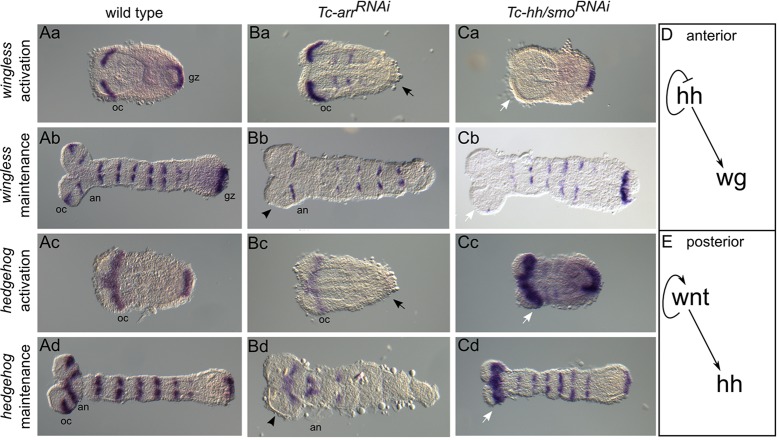Fig. 1.
Complementary interactions of Wnt and Hh signaling in the head and GZ. (A-C) Expression of Tc-wg (rows 1 and 2) and Tc-hh (rows 3 and 4) in wild-type (Aa-d) and RNAi-treated embryos with interrupted Wnt (Ba-d) or Hh (Ca-d) signaling in germ rudiments (rows 1 and 3) and elongating germ bands (rows 2 and 4). Anterior is oriented to the left. (Ba-d) When the Wnt pathway was disrupted, both Tc-wg and Tc-hh expression was abolished in Tc-arrRNAi embryos in the GZ (black arrows) and at the ocular parasegment boundary (black arrowheads). (Ca-d) When the Hh pathway was disrupted, Tc-wg expression was missing in the anterior head of Tc-hhRNAi embryos (Ca,b, white arrows), and Tc-hh expression was largely present in Tc-smoRNAi but the anterior head domains appeared enlarged (Cc,d, white arrows). (D) Genetic interactions in the anterior head: Hh signaling acts upstream of Tc-wg. (E) Genetic interactions in the GZ: Wnt/β-catenin acts upstream of Tc-hh and shows autoregulation. Arrows indicate activation. an, antennal stripe; gz, growth zone; oc, ocular stripe.

